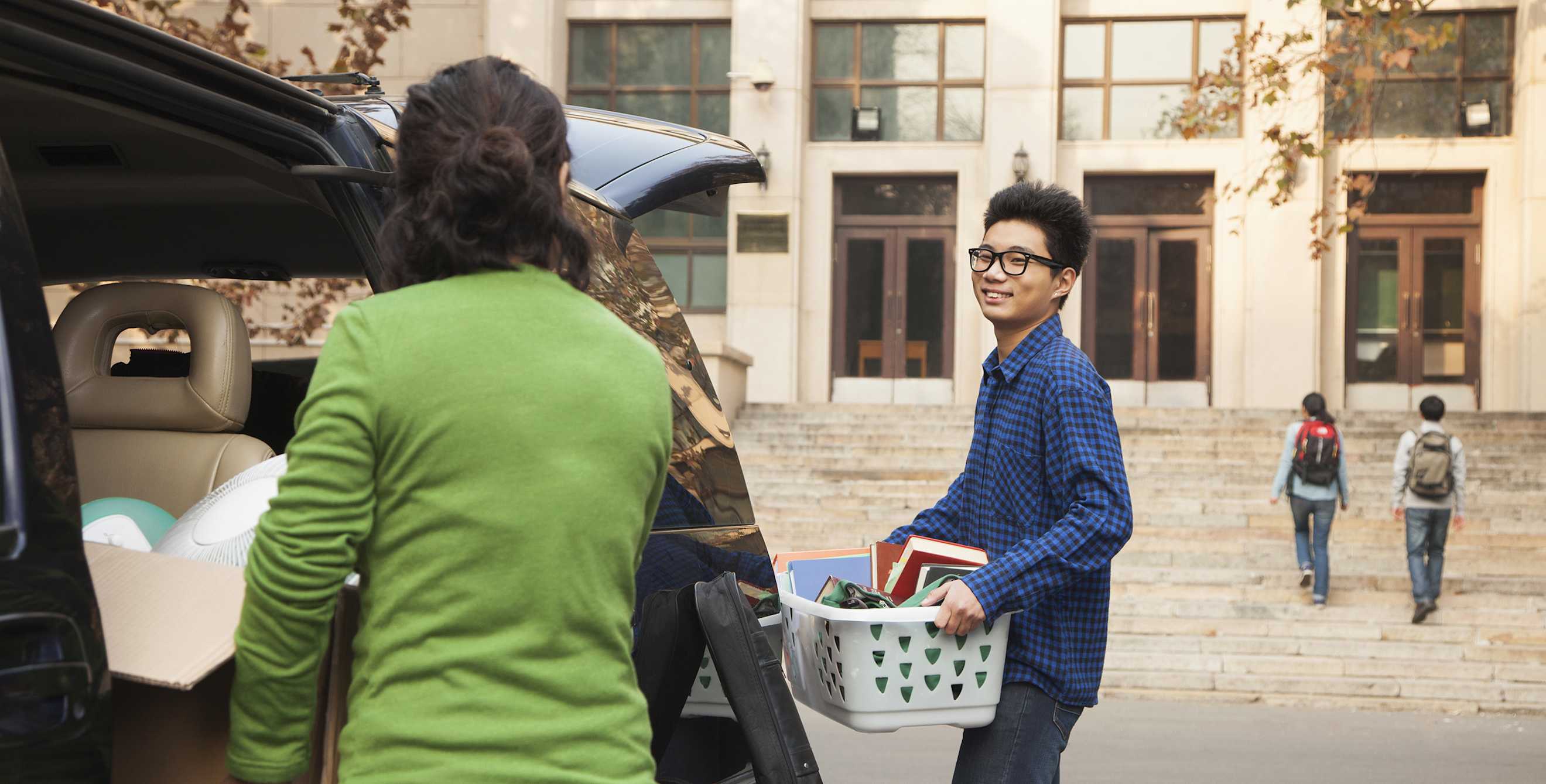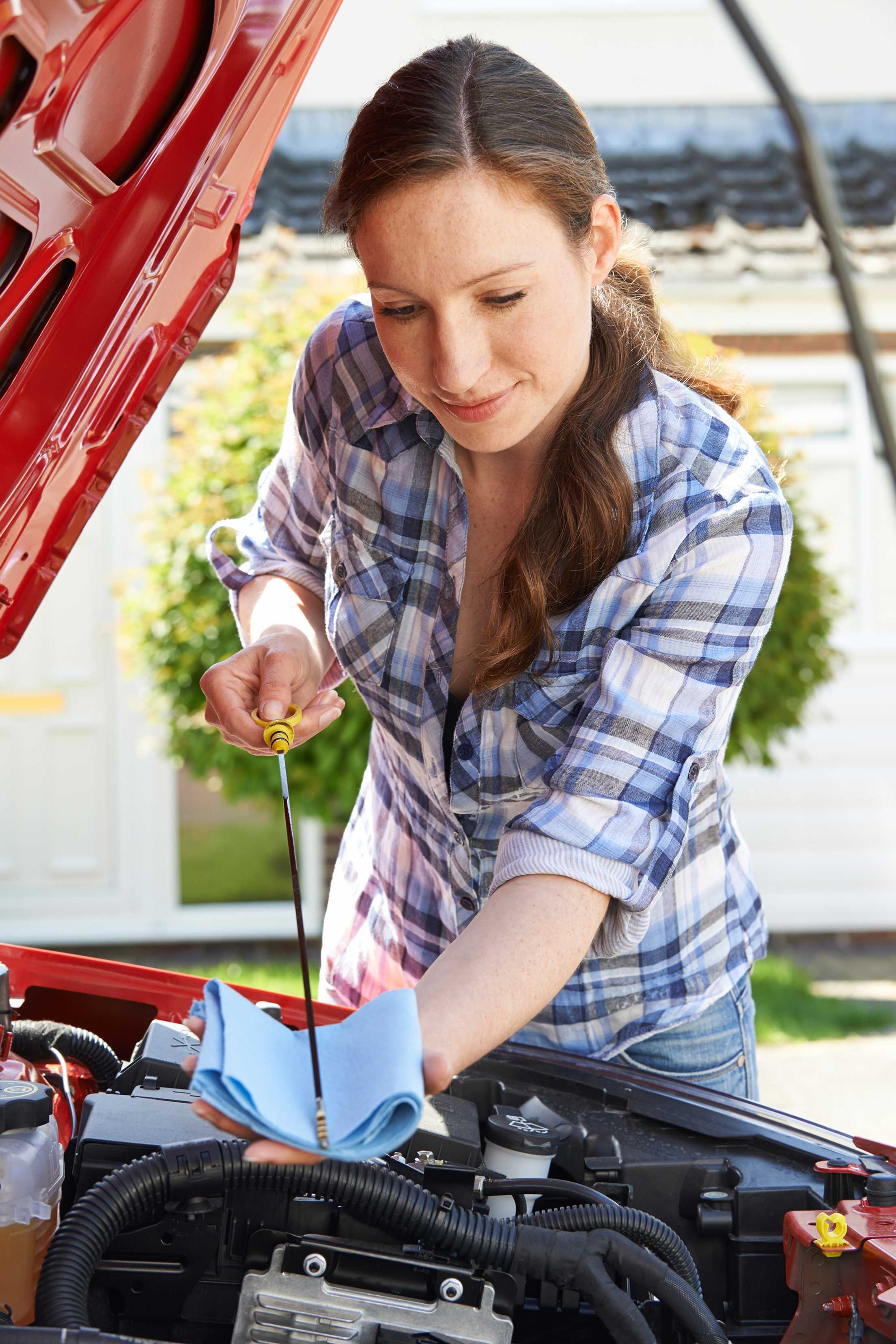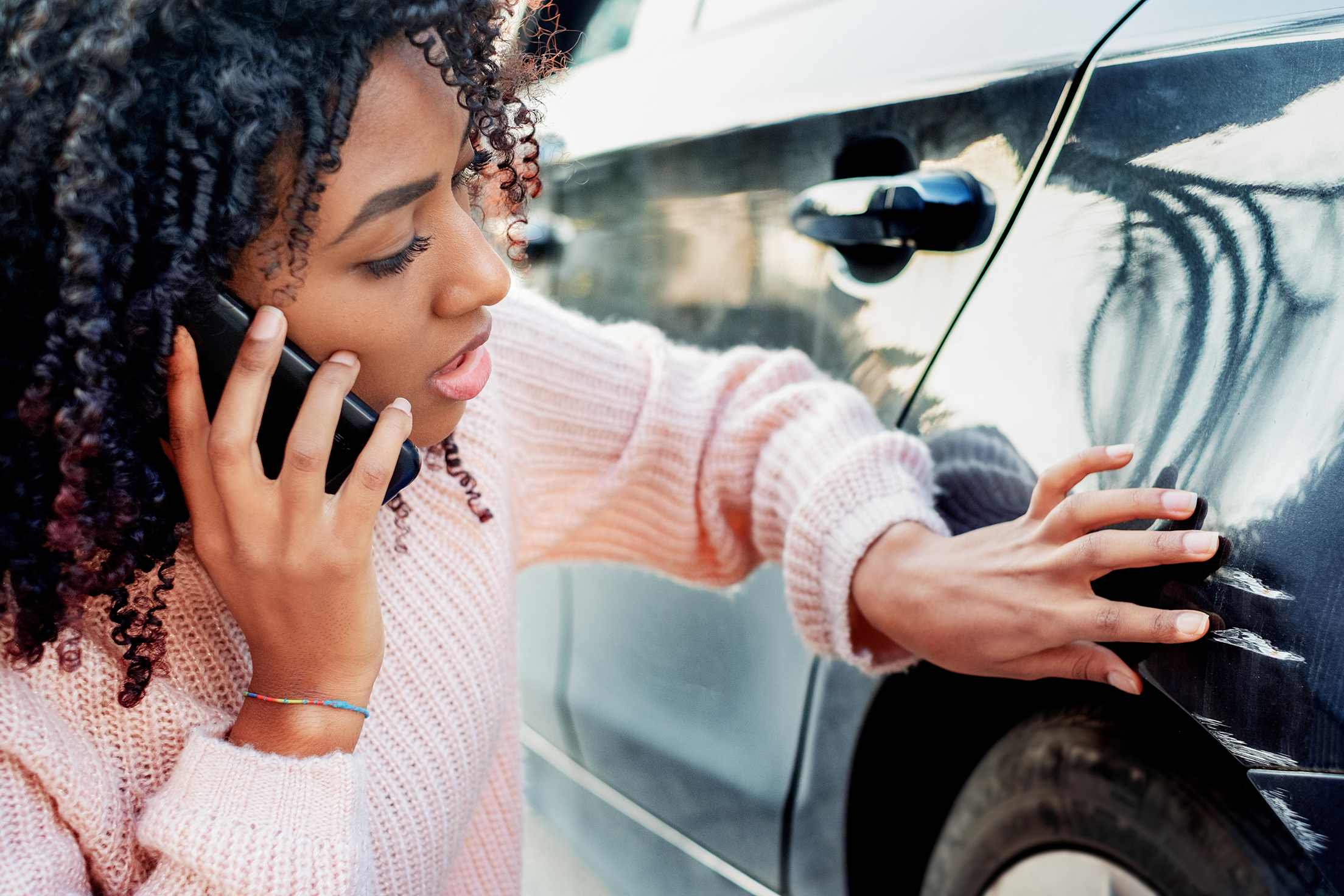
6 Essential Tips for Taking a Car to College
From maintenance to distracted driving, here’s what students and parents need to know about having a car at school.

More than 19.9 million students enrolled in college nationwide in 2018, and about half bring a car with them to school. That’s a lot of vehicles—more than 9.3 million—and a lot of responsibility for young adults who may be living away from home for the first time. Here’s what college-bound drivers and their parents can do to keep their vehicle running smoothly and prepare for unforeseen mishaps.
1. Contact your insurance agent.
The first call you should make is to your insurance agent, even if the car is staying behind. In most cases, a student can remain on a parent’s policy, if the following conditions are met:
- The student’s primary residence is still the family home. This generally means the student lives on campus or rents an apartment only during the school year. Check with your agent to be sure this applies to your policy.
- The car title is in a parent’s name, not the student’s. If it is jointly titled, the vehicle can likely remain on the parent’s policy as well.
- The student lives with one or both parents while commuting to campus. In this case, because the driver’s residency and the vehicle location haven’t changed, the existing policy can likely be continued until the student has a new permanent address.
Staying on a household policy can save money. Students typically pay a lower annual premium on a parent’s policy than if they purchase an individual policy, and keeping continuous coverage in good standing helps students secure a lower rate after they finish school and venture out on their own.
Ask your agent about other discounts that may be available, such as good grade discounts. Most companies extend this discount to unmarried, full-time students until they turn 25. Check with your agent for specific requirements.
What if the student is going to school out of state? If this is the case, it is especially important to notify your insurance provider. They need to know where the vehicle will be primarily located to ensure that minimum liability requirements are met. These vary from state to state, and your provider will know the requirements of each state it’s licensed to do business in so you can get the right coverage. If the address will still be the student’s permanent address, they can usually stay on a parent’s policy.
And, if the vehicle is staying home when the student is away, there may be options to reduce your payment. Some providers offer resident student discounts to students attending college at least 100 miles away from home who are not bringing their car. Or, you could potentially save money by classifying the student as an “occasional” or “pleasure-only” driver on the policy. This will cover the student if they are only driving the car on occasional weekends or breaks. But, once the student returns home for the summer, or decides to bring the vehicle to school with them, be sure to revisit this so that you are not denied coverage for misrepresenting how often the vehicle is being driven.
Once you have the right coverage for your situation, it’s important to consider the responsibilities of having a vehicle away from home. Think carefully before loaning the vehicle to friends or roommates; these are what insurance companies refer to as “permissive drivers”—someone who is not listed on the insurance policy, but uses the vehicle with the permission of its owner. If a friend gets into a wreck while driving your car, it affects your insurance, not theirs. In fact, insurance companies may be able to reduce or deny coverage if they determine that you or the “permissive driver” failed to comply with the terms of your policy. And if a friend who doesn’t have insurance gets into a crash that involves bodily or property damage, you could be held responsible.
“In general, when there is an accident, the insurance company will go back and look at the policy to see if there was any misrepresentation about where and how much the vehicle is driven. And if there is, the claim may not be covered,” says Gary Reid, manager of insurance operations for AAA. “With students, there’s a higher probability that they’ll take a look at this. For example, if the car is listed as being at home, why was it in an accident 600 miles away?”
Weigh the responsibilities of owning a car away from home and review your coverage with your agent before you commit to sending the car off to college.

Students should know how to do basic vehicle maintenance tasks.
2. Review vehicle maintenance.
Even if you think you have a handle on the basics of vehicle maintenance, it’s important to review the details and service records before school starts.
A few basic items include:
- Check and maintain the tires, including the spare, at least once per month, but ideally once a week. Buy an inexpensive tire gauge at your local auto parts or hardware store, and practice checking and inflating tires to the proper pressure. Tires are the first step in vehicle safety, and keeping them in shape is critical.
- Review the owner’s manual and familiarize yourself with the recommended maintenance schedule. It’s a good idea to look at the upcoming due dates for regular maintenance items like oil and filter changes, and add them to the student’s smartphone calendar so they can book appointments in advance.
- Locate a reliable repair shop close to school. Look for AAA Owned and Operated and AAA Approved Auto Repair facilities nationwide. “If possible, visit the shop and introduce your teen so they are comfortable coming to them with a repair or emergency,” John Walter, vice president of Car Care at AAA Arizona, recommends.
3. Talk openly about safety.
“Talking frequently about driving safety and leading by example can make a huge difference in helping keep your teen driver safe—especially when they’re away from home,” Michelle Donati-Grayman, AAA Government & Public Affairs Lead, says. “Start by reviewing and discussing risky driving behaviors like speeding, and distracted and impaired driving.”
Parents should remind their college student:
- Car accidents are the leading cause of death for teens in the U.S., and distracted driving—particularly from mobile phone use—increases the risk of an accident. Hands-free laws vary from state to state, but interacting with a mobile phone is not only distracting and dangerous, but also illegal in many states, including California.
- In addition to talking about mobile phone use, make sure your young adult knows that interacting with passengers can also be a dangerous distraction.
- When it comes to speed, share the importance of adhering to posted speed limits and knowing when to slow down for bad road or weather conditions.
- Make sure your child understands that driving impaired, or driving with an impaired driver, should never be an option. This includes driving under the influence of alcohol, marijuana, and prescription drugs. Not only is it illegal, but the consequences could be severe—even deadly.

Know who to call if you need to file an insurance claim or request roadside assistance.
4. Prepare for any situation.
If you haven’t already, add your student to your AAA Membership as an Associate Member. Unlike roadside assistance packages that may come with your vehicle, AAA Emergency Roadside Assistance follows the Member, regardless of who they are driving or riding with. And services like towing and jump starts are included with the Membership—you don’t have to pay and receive reimbursement later. Students should add their emergency roadside provider information, preferred auto repair facility, and auto insurance provider to their phone contacts so they are easy to find in a hurry.
Despite the best preparation, breakdowns and other roadside mishaps can occur. Make sure the vehicle has a well-stocked roadside emergency kit, and that the driver knows how to use it. In addition to the basics, such as a flashlight and spare batteries, a simple tool kit, cell phone charger, and water, be sure to add items like a snow brush, windshield washer fluid for colder climates, and cat litter for traction if the student is attending school in an area that freezes.
5. Download helpful apps.
There are a slew of iPhone and Android apps that can help students navigate the world on their own with a vehicle. The AAA app can help find cheap fuel, map a road trip, and call for service. You likely have a navigation app like Waze, Google Maps, or Apple Maps, but what about the Got to Go Restroom Finder for those other roadside emergencies? Sites like RepairPal can give you a rough estimate of the cost of car repairs, and apps like aCar, Car Minder, and Fuelly can help you track basic vehicle maintenance items.
6. Discuss ride sharing safety.
Whether they have a car on campus or not, nearly half of college-age Americans use ride-sharing services, according to a recent Gallup poll. While hailing a ride is a popular way to get around, it’s important to take precautions and know how to stay safe.
- Before you ride, check your driver’s rating and make sure your assigned driver has at least 4.5 out of 5 stars. Scan reviews for negative comments, and if it doesn’t feel right, cancel the trip and hail another driver.
- When possible, stay inside while you wait for your ride.
- Let someone know you are requesting a ride, and tell them where you’re going. Lyft and Uber allow you to share your exact route, current location, and estimated time of arrival with someone you trust. You can also take a screenshot of the app with the driver’s identifying information and text it to a friend or family member.
- Before you get in the car, cross-check the license plate with the number on your app. Ask for the driver’s name and “Who are you picking up?”
- Ensure that the child lock is not engaged on the side of the open door before getting in.
- Always sit in the back, so you can exit on either side in an emergency, and to put distance between you and the driver. Remember to wear your seatbelt.
- Don’t give the driver your phone number, or reveal personal information like where you live or work. When being driven home, request to be dropped off a few doors down and walk to your final destination once the driver has left.
- If you sense trouble, call 9-1-1. Some ride-hailing apps also include emergency buttons that connect you with 9-1-1. If it’s safe, exit the vehicle quickly and go to the nearest public area. Report all incidents, even attempted crimes, to the police.
Whether it’s the student’s first year on campus or just the car’s first college experience, a little advance preparation can give students and parents peace of mind and help avoid future problems during the school year.
Exceptional coverage. Expert service. Extra savings.
AAA Auto, Home, and Life Insurance